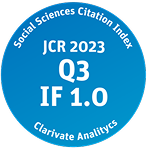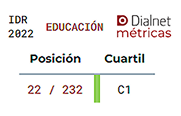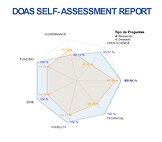Nature deficit and technology overuse in childhood. A correlational study by gender of its influence on sustainable identity construction in childhood
DOI:
https://doi.org/10.22550/2174-0909.4124Keywords:
nature deficit, technology surplus, childhood, identity, autonomy, freedom, responsibilityAbstract
This article addresses important aspects of the fragmented bidirectionality between children and nature that currently exists in childhood. The combination of factors to consider as a result of constant socio-environmental crises makes addressing two important points relevant: where children prefer spending their free time and the differences they perceive according to whether the options are more or less artificial/natural; and, on similar lines, whether these decisions and preferences shape other key pieces of their identity, such as their sense of freedom, autonomy, and responsibility. The main aim is to identify their preferences and, based on their perceptions, analyse whether there are differences by gender in how they approach free time: whether they use technology or not, whether they prioritise the street and natural spaces, and whether effects are observed in their identity construction. An anonymous, self-administered quantitative survey using a structured questionnaire was performed. The target population comprised students enrolled in years 5 and 6 of primary school, with a sample of 2586 respondents at a national level. The statistical analysis involved calculating descriptive measures such as means, standard deviations, medians, and interquartile ranges (IR). The Mann-Whitney U test was also applied and Spearman’s correlation coefficient was calculated. The results, based on a series of correlational analyses, suggest that there are significant differences by gender in preference for use and spaces, as well as differences in the effects of these preferences on their identity. The possibility of new pedagogical demands and responsibilities for social justice in environmental matters emerging remains open.
Downloads
References
Adams, D., y Beauchamp, G. (2021). A study of the experiences of children aged 7-11 taking part in mindful approaches in local nature reserves [Estudio de las experiencias de niños de 7 a 11 años que participan en actividades de atención plena en reservas naturales locales]. Journal of Adventure Education and Outdoor Learning, 21(2), 129-138. https://doi.org/10.1080/14729679.2020.1736110
Amoly, E., Dadvand, P., Forns, J., López-Vicente, M., Basagaña, X., Julvez, J., Álvarez-Pedrerol, M., Nieuwenhuijsen, M., y Sunyer, J. (2014). Green and blue spaces and behavioral development in Barcelona schoolchildren: The BREATHE Project [Espacios verdes y azules y desarrollo conductual en escolares de Barcelona: el proyecto BREATHE]. Environmental Health Perspectives, 122(12), 1351-1358. https://doi.org/10.1289/ehp.1408215
Änggård, E. (2016). How matter comes to matter in children’s nature play: Posthumanist approaches and children’s geographies [Cómo la materia se convierte en materia en el juego infantil con la naturaleza: enfoques poshumanistas y geografías infantiles]. Children’s Geographies, 14(1), 77-90. https://doi.org/10.1080/14733285.2015.1004523
Askerlund, P., y Almers, E. (2016). Forest gardens. New opportunities for urban children to understand and develop relationships with other organisms [Jardines forestales. Nuevas oportunidades para que los niños urbanos comprendan y desarrollen relaciones con otros organismos]. Urban Forestry & Urban Greening, 20(1), 187-197. https://doi.org/10.1016/j.ufug.2016.08.007
Bisquerra, R., y Pérez-Escoda, N. (2015). ¿Pueden las escalas Likert aumentar en sensibilidad? REIRE: revista d’innovació i recerca en educació, 8(2), 129-147. https://doi.org/10.1344/reire2015.8.2828
Caballero, D., Martín, J., y Andrade, L. E. (2024). Unpacking the relationship between screen use and educational outcomes in childhood: A systematic literature review [Unpacking the relationship between screen use and educational outcomes in childhood: una revisión sistemática de la literatura]. Computers & Education, 215, 105049. https://doi.org/10.1016/j.compedu.2024.105049
Chiumento, A., Mukherjee, I., Chandna, J., Dutton, C., Rahman, A., y Bristow, K. (2018). A haven of green space: Learning from a pilot pre-post evaluation of a school-based social and therapeutic horticulture intervention with children [Un paraíso de espacios verdes: aprendizajes de una evaluación piloto pre-post de una intervención escolar de horticultura social y terapéutica con niños]. BMC Public Health, 18(1), 836. https://doi.org/10.1186/s12889-018-5661-9
Correa, C., Artiagoitia, M., González, R., y González, A. (2023). Educación al aire libre: clave para el bienestar, desarrollo y aprendizaje de niños y niñas. Base, Diseño e Innovación, 8(7), 72-81. https://hdl.handle.net/11447/8503
Cortina, A. (2007). Ética de la razón cordial. Educar en la ciudadanía. Ediciones Nobel.
De Tapia, R., y Salvado, M. (2021). From a deficit of nature to a surplus of technology: The search for compatibility in education [Del déficit de naturaleza al superávit de tecnología: la búsqueda de la compatibilidad en la educación]. En J. M. Muñoz-Rodríguez (Ed.), Identity in a hyperconnected society. Risk and educative proposals [Identidad en una sociedad hiperconectada. Riesgo y propuestas educativas] (pp. 185-198). Springer.
Díaz-Romanillos, E. (2024). Reimaginando la educación ambiental en la era del antropoceno: una reflexión ética. Teoría de la Educación. Revista Interuniversitaria, 36(2),59-78. https://doi.org/10.14201/teri.31794
Figueras, B. M., y Torrents, A. (2022). El futuro está por crear: temporalidad e imaginación en el antropoceno. Artnodes, (29), 1-9. https://doi.org/10.7238/artnodes.v0i29.392989
García, Á., Vlieghe, J., Muñoz Rodríguez, J. M., y Martín Lucas, J. (2021). Pensar la (teoría de la) educación desde la tecnología de nuestro tiempo. Teoría de la educación. Revista interuniversitaria, 33(2), 5-26. https://doi.org/10.14201/teri.25432
Gaviria, J. L. (2024). ¿Transhumanismo “contra” educación? Teoría De La Educación. Revista Interuniversitaria, 36(2), 1-23. https://doi.org/10.14201/teri.31762
González-Tapia, G., Lazzaro-Salazar, M., y Mundaca, E. A. (2022). A (geo-)narrative analysis of children’s perceptions of wellbeing in relation to nature as the basis for educational intervention planning [Un análisis (geo)narrativo de las percepciones de bienestar de los niños en relación con la naturaleza como base para la planificación de intervenciones educativas]. SAGE Open, 12(2). https://doi.org/10.1177/21582440221097398
Guerra, M., Villa, F. V., y Glaveanu, V. P. (2021). Creativity and outdoor education in primary schools: A review of the literature [Creatividad y educación al aire libre en las escuelas de educación primaria: una revisión de la literatura]. RELAdEI: Revista Latinoamericana de Educación Infantil, 10(1), 91-107. https://revistas.usc.gal/index.php/reladei/article/view/7671
Guevara-Arayón, R. (2020). Género, tecnología y educación: un estudio de caso sobre las diferencias de género en el uso de las TIC. Revista Peruana de Investigación Educativa, 12(12), 89-122. https://doi.org/10.34236/rpie.v12i12.147
Gutiérrez-Pérez, B. M., Ruedas, J., Caballero, D., y Murciano, A. B. (2024). La conexión con la naturaleza como factor clave en la formación de las identidades infantiles: una revisión sistemática. Teoría de la educación, 36(1), 31-52. https://doi.org/10.14201/teri.31397
Haraway, D. J. (2020). Seguir con el problema: generar parentesco en el chthuluceno. Consonni.
Humphreys, C., y Blenkinsop, S. (2018). Ecological identity, empathy, and experiential learning: A young child’s explorations of a nearby river [Identidad ecológica, empatía y aprendizaje experimental: las exploraciones de un niño pequeño en un río cercano]. Australian Journal of Environmental Education, 34(2), 143-158. https://doi.org/10.1017/aee.2018.20
Huynh, O., Craig, W., Janssen, I., y Pickett, W. (2013). Exposure to public natural space as a protective factor for emotional well-being among young people in Canada [La exposición a espacios naturales públicos como factor protector del bienestar emocional entre los jóvenes de Canadá]. BMC Public Health, (13), 407. https://doi.org/10.1186/1471-2458-13-407
Jarvis, I., Sbihi, H., Davis, Z., Brauer, M., Czekajlo, A., Davies, H., Gergel, S., Guhn, M., Jerrett, M., Koehoorn, M., Nesbitt, L., Oberlander, T., Su, J., y van den Bosch, M. (2022). The influence of early-life residential exposure to different vegetation types and paved surfaces on early childhood development: A population-based birth cohort study [Influencia de la exposición residencial a diferentes tipos de vegetación y superficies pavimentadas durante los primeros años de vida en el desarrollo de la primera infancia: un estudio de cohortes de nacimiento basado en la población]. Environment International, 163, 107196. https://doi.org/10.1016/j.envint.2022.107196
Kuchta, E. C. (2022). Rewilding the imagination: Teaching ecocriticism in the change times [Reconstruir la imaginación: enseñar ecocrítica en tiempos de cambio]. Canadian Journal of Environmental Education (CJEE), 25, 190-206. https://cjee.lakeheadu.ca/article/view/1696
Latour, B. (2022). Nunca fuimos modernos. Ensayos de antropología simétrica [We have never been modern. Essays in the anthropology of symmetry author]. Clave intelectual.
L’Ecuyer, C., Oron, J. V., Montiel, I. Osorio, A., López-Fidalgo, J., y Salmerón, M. A. (en prensa). Cuestionando el desafío a las recomendaciones sobre el uso de pantallas. Teoría de la educación. Revista Interuniversitaria.
Leopold, A. (1949). A sand county almanac, and sketches here and there [Almanaque de un condado arenoso y algunos ensayos sobre otros lugares]. Oxford University Press.
Louv, R. (2005). Last child in the woods: Saving our children from nature-deficit disorder [El último niño en el bosque: salvar a nuestros hijos del trastorno por déficit de naturaleza]. Algonquin Books.
Luís, S., Dias, R., y Lima, M. L. (2020). Greener schoolyards, greener futures? Greener school- yards buffer decreased contact with nature and are linked to connectedness to nature [Patios escolares más verdes, ¿futuros más verdes? Los patios escolares más verdes amortiguan el menor contacto con la naturaleza y están relacionados con la conexión con la naturaleza]. Frontiers in Psychology, 11, 567882. https://doi.org/10.3389/fpsyg.2020.567882
Marcelo, C., Yot-Domínguez, C., Marcelo, P., Murillo, P., y Mayor-Ruiz, C. (2022). No me llames influencer. Nuevos artesanos digitales en educación. Campus Virtuales, 11(2), 133-145. http://dx.doi.org/10.54988/cv.2022.2.1150
Martín, J., y Muñoz, J.M. (2023). La (des-re) conexión con la naturaleza y la tecnología como fenómenos educativos. ¿Qué nos hace más humanos? En A. Cámara, A. Runte, D., Amber, y D. Martín (Coords.), Educación: encuentros y desencuentros (pp. 178-182). Universidad de Jaén.
Martínez, A. (2023). La política del antropoceno. Hacia un fundamento común de las responsabilidades planetarias. DERECHOS Y LIBERTADES: Revista de Filosofía del Derecho y derechos humanos, 49, 115-152. https://doi.org/10.20318/dyl.2023.7721
Misiaszek, G. W. (2023). Ecopedagogy: Freirean teaching to disrupt socio-environmental injustices, anthropocentric dominance, and unsustainability of the Anthropocene [Ecopedagogía: enseñanza freireana para trastocar las injusticias socioambientales, la dominación antropocéntrica y la insostenibilidad del antropoceno]. Educational Philosophy and Theory, 55(11), 1253-1267. https://doi.org/10.1080/00131857.2022.2130044
Muñoz-Rodríguez, J. M. (2021). Identity in a hyperconnected society: Risks and educative proposals [Identidad en una sociedad hiperconectada: riesgos y propuestas educativas]. Springer.
Muñoz-Rodríguez, J. M. (2022). Del déficit de naturaleza hacia una pedagogía de las cosas de la naturaleza. En A. García (Coord.), La pedagogía de las cosas: quiebras de la educación de hoy (pp. 395-402). Octaedro.
Mycock, K. (2019). Playing with mud: Becoming stuck, becoming free? The negotiation of gendered/class identities when learning outdoors [Jugar con el barro: ¿quedarse atascado o liberarse? La negociación de las identidades de género/clase en el aprendizaje al aire libre]. Children’s Geographies, 17(4), 454-466. https://doi.org/10.1080/14733285.2018.1546379
Naes, A. (1986). The deep-ecology movement: Some philosophical aspects [El movimiento de la ecología profunda: algunos aspectos filosóficos]. Philosophical Inquiry, 8(1-2), 10-31. https://doi.org/10.5840/philinquiry198681/22
Pattier, D. (2021). Referentes educativos durante la pandemia de la COVID-19. El éxito de los edutubers. Publicaciones, 51(3), 533-548. https://doi.org/10.30827/publicaciones.v51i3.18080
Paulsen, M., Jagodzinski, J., y M. Hawke, S. (Eds.). (2022). Pedagogy in the anthropocene: Re-wilding education for a new Earth [Pedagogía en el antropoceno: reasilvestrar la edu- cación para una nueva Tierra]. Springer International Publishing.
Payne, P. G., y Wattchow, B. (2008). Slow pedagogy and placing education in post-traditional outdoor education [Pedagogía lenta y colocación de la educación en la educación al aire libre postradicional]. Australian Journal of Outdoor Education, 1, 25-38.
Pollin, S., y Retzlaff-Fürst, C. (2021). The school garden: A social and emotional place [El huerto escolar: un lugar social y emocional]. Frontiers in Psychology, 12, 567720. https://doi.org/10.3389/fpsyg.2021.567720
Sabater, C., y Fernández, J. B. (2015). No sin mi móvil. Diferencias de género y uso de las nuevas tecnologías. Icon14, 13(1), 208-246. https://doi.org/10.7195/ri14.v13i1.722
Serrate, S., Sánchez, A, Andrade, L. E., y Muñoz, J. M. (2023). Identidad onlife: la cuestión del género y la edad en el comportamiento adolescente ante las redes. Comunicar, 31(75), 9-20. https://doi.org/10.3916/C75-2023-01
Shahjahan, R. A. (2015). Being lazy and slowing down: Toward decolonizing time, our body, and pedagogy [Ser perezoso y reducir la velocidad: hacia la descolonización del tiempo, nuestro cuerpo y la pedagogía]. Educational Philosophy and Theory, 47(5), 488-501. https://doi.org/10.1080/00131857.2014.880645
Squillacioti, G., Carsin, A. E., Bellisario, V., Bono, R., y García-Aymerich, J. (2022). Multisite greenness exposure and oxidative stress in children. The potential mediating role of physical activity [Exposición a múltiples zonas verdes y estrés oxidativo en niños. El posible papel mediador de la actividad física]. Environmental Research, 209, 112857. https://doi.org/10.1016/j.envres.2022.112857
Sosa, N. M. (2000). Ética ecológica: entre la falacia y el reduccionismo. Laguna. Revista de Filosofía, (7), 307-327.
Stratford, R. (2019). Educational philosophy, ecology and theanthropocene [Filosofía de la educación, ecología y antropoceno]. Educational Philosophy and Theory, 51(2), 149-152. https://doi.org/10.1080/00131857.2017.1403803
Tafalla, M. (2022). Filosofía ante la crisis ecológica. Una propuesta de convivencia con las de- más especies: decrecimiento, veganismo y rewilding. Plaza y Valdés.
Taylor, A. (2017). Beyond stewardship: Common world pedagogies for the Anthropocene [Más allá de la administración: pedagogías del mundo común para el antropoceno]. Environmental Education Research, 23(10), 1448-1461 https://doi.org/10.1080/13504622.2017.1325452
Todd, S. (2024). Ecología de encuentros: la lógica del compostaje como respuesta educativa al colapso ambiental. Teoría de la Educación. Revista Interuniversitaria, 36(2), 43-58. https://doi.org/10.14201/teri.31915
Villas, F. (2023). Cómo las pantallas devoran a nuestros hijos. Herder.
Wilson, R. (2019). What is nature? [¿Qué es la naturaleza?]. International Journal of Early Childhood Environmental Education, 7(1), 26-39.
Downloads
Published
-
Abstract1
-
PDF (Español)0
-
PDF0
How to Cite
Issue
Section
License

This work is licensed under a Creative Commons Attribution-NonCommercial 4.0 International License.









